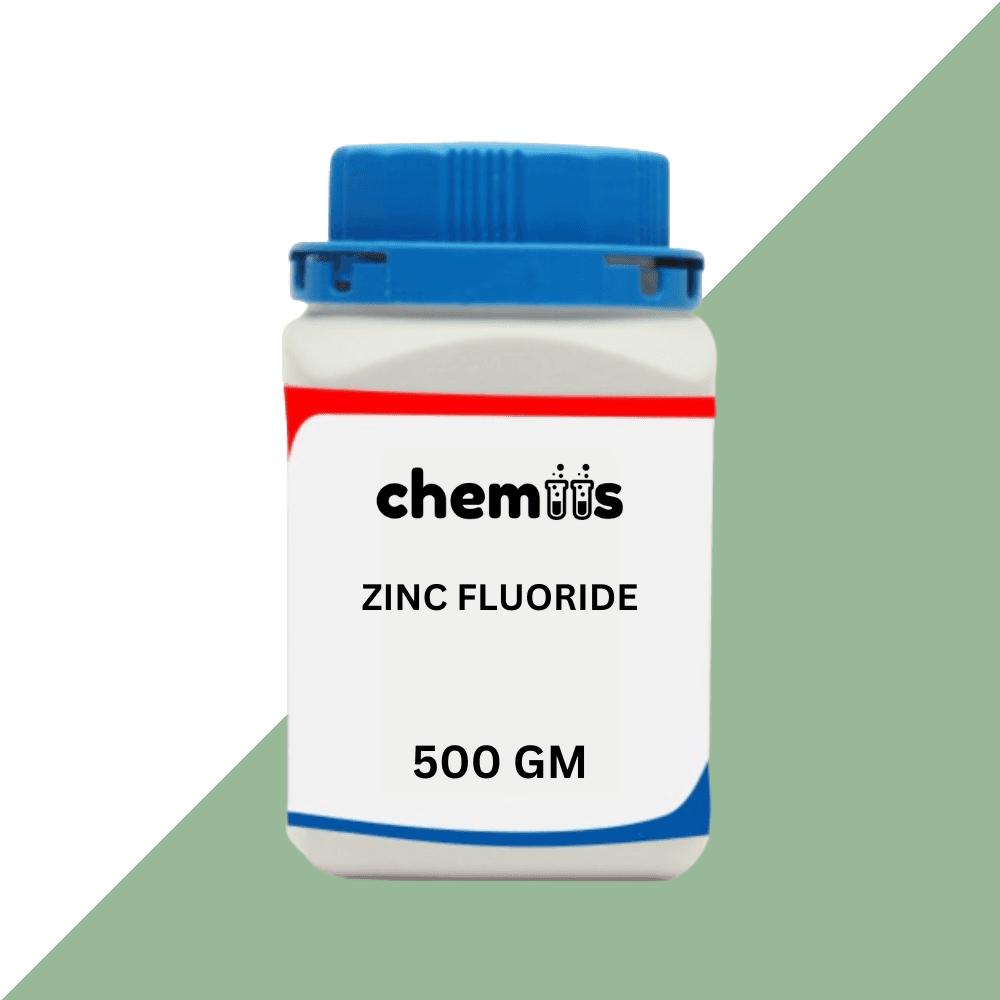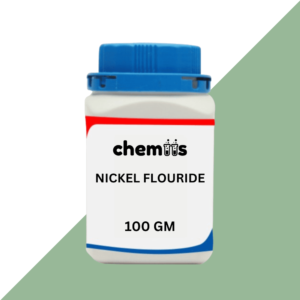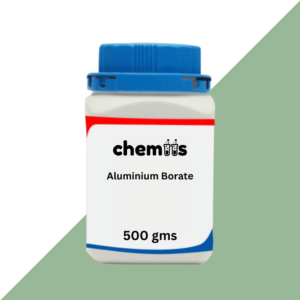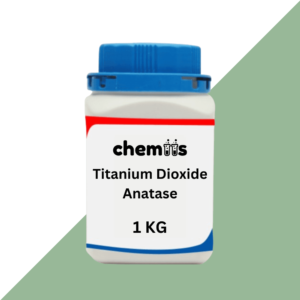Zinc Fluoride (ZnF₂) is an inorganic compound that consists of zinc and fluoride. It is a white, crystalline solid that is soluble in acids but insoluble in water. Zinc Fluoride is primarily used in industrial applications, including in the production of ceramics, glass, and as a catalyst in various chemical reactions. Its high melting point and chemical stability make it valuable in high-temperature applications. Zinc Fluoride is also employed as a fluoride source in certain applications, including in the synthesis of other chemical compounds.
Applications of Zinc Fluoride
1. Glass and Ceramic Manufacturing
- Glass Production:
Zinc Fluoride is commonly used in the production of specialty glasses, including optically transparent glasses, and as a component in the manufacturing of certain glassware and mirrors. Its high melting point and refractive properties enhance the performance of glass in high-temperature and optical applications. - Ceramic Glazes:
Zinc Fluoride is used in ceramic glazes to provide a smooth, shiny finish. It also acts as a flux in certain types of ceramic manufacturing, reducing the temperature required for firing ceramics.
2. Fluoride Source
- Fluoride Chemistry:
Zinc Fluoride is used as a source of fluoride ions in chemical reactions. These reactions are important in the synthesis of other compounds, such as pharmaceuticals, specialty chemicals, and agricultural products. - Fluorination Reactions:
Zinc Fluoride is utilized in fluorination processes, where fluoride ions are introduced into molecules to improve their properties, including their chemical stability and resistance to corrosion.
3. Catalyst in Chemical Processes
- Catalytic Reactions:
Zinc Fluoride is used as a catalyst or catalyst precursor in certain chemical processes, such as those in the production of high-purity chemicals, specialty plastics, and resins. It accelerates reactions by facilitating the exchange of fluoride ions in reaction mechanisms.
4. Insecticides and Pesticides
- Agriculture:
Zinc Fluoride has limited but important use in the formulation of certain insecticides and pesticides, where it acts as a fluoride source for specific applications, enhancing the efficacy of the products in controlling pests.
5. Optical Coatings and Polishing
- Optical Coatings:
Zinc Fluoride is employed in the production of optical coatings for lenses and mirrors, as it helps improve the optical clarity and durability of the surfaces. It can also be used in the manufacture of certain optical fibers.
Safety and Handling Guidelines
1. Hazards and Precautions
- Health Hazards:
- Inhalation: Inhalation of Zinc Fluoride dust or fumes can cause respiratory irritation and potentially serious lung damage. Prolonged exposure to fluoride fumes may lead to dental or skeletal fluorosis.
- Skin Contact: Prolonged skin contact with Zinc Fluoride may lead to skin irritation.
- Eye Contact: Contact with eyes can result in irritation, and prolonged exposure may cause damage.
- Ingestion: Ingesting Zinc Fluoride can be harmful and may cause gastrointestinal distress or toxicity.
- Environmental Hazards:
- Zinc Fluoride is hazardous to aquatic life and can cause long-lasting effects in water environments. Avoid contamination of water sources when disposing of this material.
2. Personal Protective Equipment (PPE)
- Respiratory Protection:
Wear a NIOSH-approved respirator with appropriate filters (e.g., P100) when handling Zinc Fluoride dust or fumes, especially in poorly ventilated areas or during high-temperature operations. - Eye Protection:
Safety goggles or face shields should be worn to protect the eyes from dust or splashes of Zinc Fluoride. - Skin Protection:
Protective gloves, long sleeves, and trousers should be worn to prevent skin contact. - Ventilation:
Work in a well-ventilated area, preferably in a fume hood or with local exhaust ventilation, to prevent the buildup of hazardous fumes.
3. Storage Instructions
- Storage Conditions:
Store Zinc Fluoride in tightly sealed containers in a cool, dry, and well-ventilated area away from moisture and incompatible materials (e.g., acids). Keep away from strong oxidizers and combustible materials to prevent reactions. - Incompatibilities:
Zinc Fluoride reacts with acids to release hydrogen fluoride gas, which is highly toxic. It should not be stored with acidic or moisture-containing substances.
4. Spill and Cleanup
- Small Spills:
Clean up small spills of Zinc Fluoride by using a damp cloth to sweep the powder into a sealed container for proper disposal. Avoid generating dust. - Large Spills:
In case of a large spill, isolate the area, evacuate personnel, and wear full protective equipment. Use a vacuum cleaner with a HEPA filter to clean up the spill. Dispose of the material in accordance with local regulations.
5. First Aid Measures
- Inhalation:
Remove the affected person from the exposure area immediately. Seek medical attention if symptoms such as difficulty breathing or coughing persist. - Skin Contact:
Wash affected skin areas with soap and water. If irritation persists, seek medical attention. - Eye Contact:
Flush eyes with water for at least 15 minutes, ensuring to rinse under the eyelids. Seek medical attention if irritation continues. - Ingestion:
Do not induce vomiting. Rinse the mouth with water and seek immediate medical attention.








Aman Sheikh (verified owner) –
Product matches the description.
Raj Malhotra (verified owner) –
Easy to find what I wanted.
Kunal Rathi (verified owner) –
Hassle-free experience.
Kunal Rathi (verified owner) –
On-time and well-packed.
Lokesh Rathi (verified owner) –
Smooth ordering process.
Devansh Kulkarni (verified owner) –
Well-labeled products.
Varun Raghavan (verified owner) –
Fast and accurate delivery.
Vipin Giri (verified owner) –
Neatly delivered.
Ankur Tyagi (verified owner) –
Good service.
Manju Devi (verified owner) –
Super fast shipping.